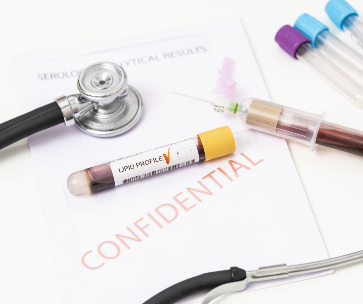-
80-3465 Platinum Drive,
Mississauga, ON, L5M 2S1
-
Mon – Fri: 9:00 AM to 6:00 PM
Sat – Sun: 10:00 AM to 6:00 PM
 Hypercholesterolemia is the term used to refer to a high blood cholesterol level. Cholesterol is a waxy substance that is produced by the liver and is a component of all cells found in the body.
Hypercholesterolemia is the term used to refer to a high blood cholesterol level. Cholesterol is a waxy substance that is produced by the liver and is a component of all cells found in the body.
All of the cholesterol a person needs is produced in the liver, but another source is dietary cholesterol, which comes from animal food products such as meat, poultry, dairy, egg yolk and fish. Such foods are rich in saturated fats and trans fats, substances that can trigger the liver to make an excess of cholesterol and in some cases, this can lead to hypercholesterolemia.
Cholesterol is required for various bodily functions including the synthesis of cell membranes and certain hormones and the production of substances required for fat digestion. However, a cholesterol level that is too high can increase the risk of coronary artery disease.
Excess cholesterol present in the blood forms fatty deposits in the walls of the coronary arteries, the blood vessels that supply the heart with blood. As the cholesterol accumulates, it causes atherosclerotic plaques to form, which narrow and harden the artery walls.
There are also inheritable forms of hypercholesterolemia that can cause excess cholesterol to accumulate in other bodily tissues such as the tendons or the under the skin of the eyelids. The most common of these conditions is familial hypercholesterolemia.
Hypercholesterolemia does not usually present with any symptoms and the only way to check for the condition is to perform a check of the blood cholesterol level, referred to as a lipid profile.
A total cholesterol level of above 200 mg/dL is generally considered high and an HDL of below 40 is generally considered poor.
Patients diagnosed with hypercholesterolemia are advised to modify their diet and engage in regular physical activity.
Common examples of treatment strategies include the following:
Statins: These block a substance required by the liver for cholesterol synthesis, which triggers the liver to acquire cholesterol from the blood. The body may also remove cholesterol from plaques that have formed in the arteries which can improve artery health.
Bile-Acid-Binding Resins: The liver needs cholesterol to make the bile acids required for digestion. By binding to bile acids, these resins cause the liver to acquire excess cholesterol in order to still produce the acids, which has the effect of lowering the blood cholesterol level.
Cholesterol Absorption Inhibitors: Since cholesterol is absorbed into the bloodstream from food in the small intestine, inhibitors of this process help to reduce the blood cholesterol level.
Resources: https://www.news-medical.net/health/What-is-Hypercholesterolemia.aspx
Social Chat is free, download and try it now here!